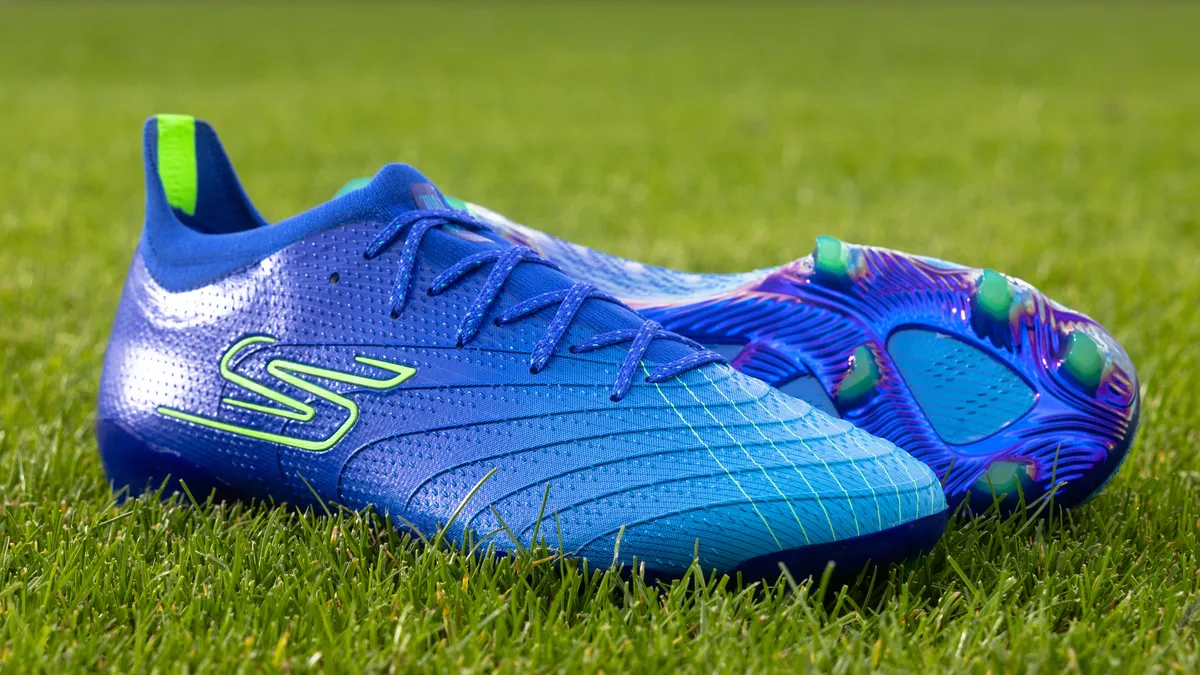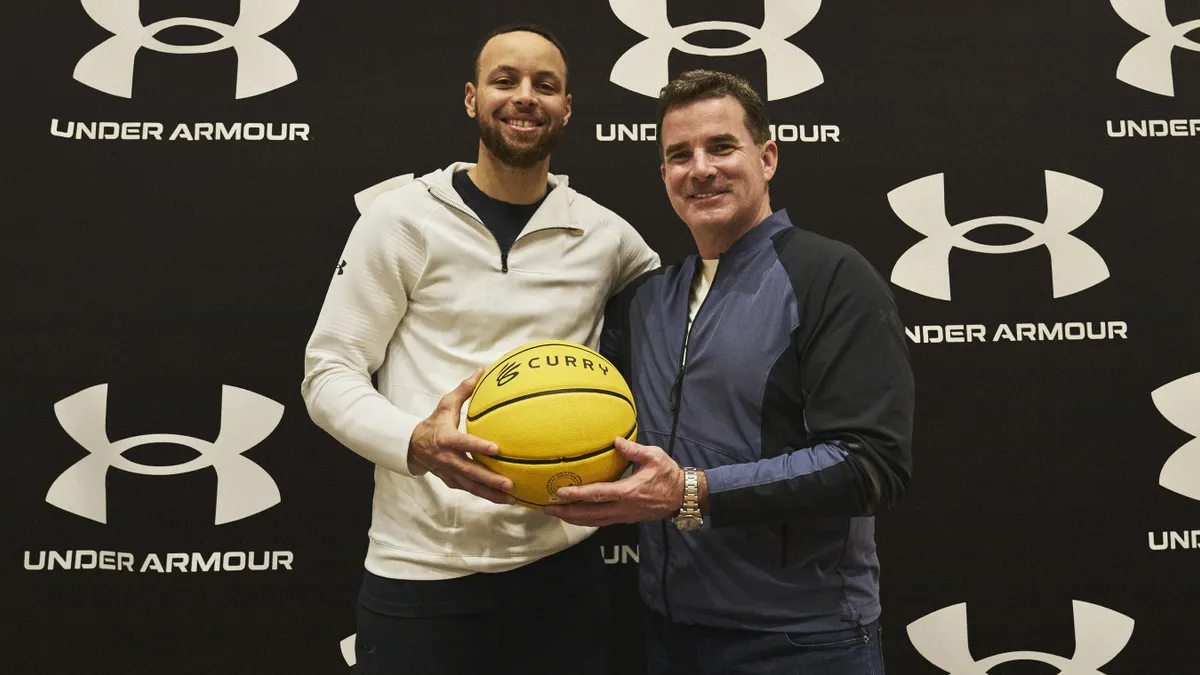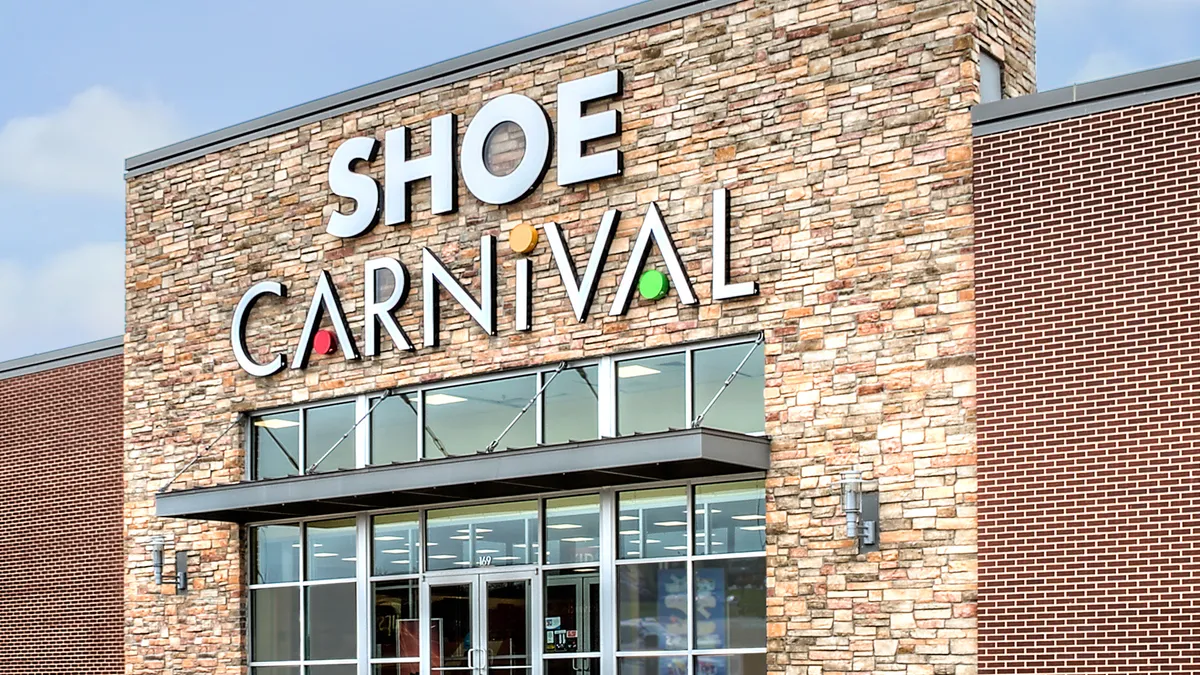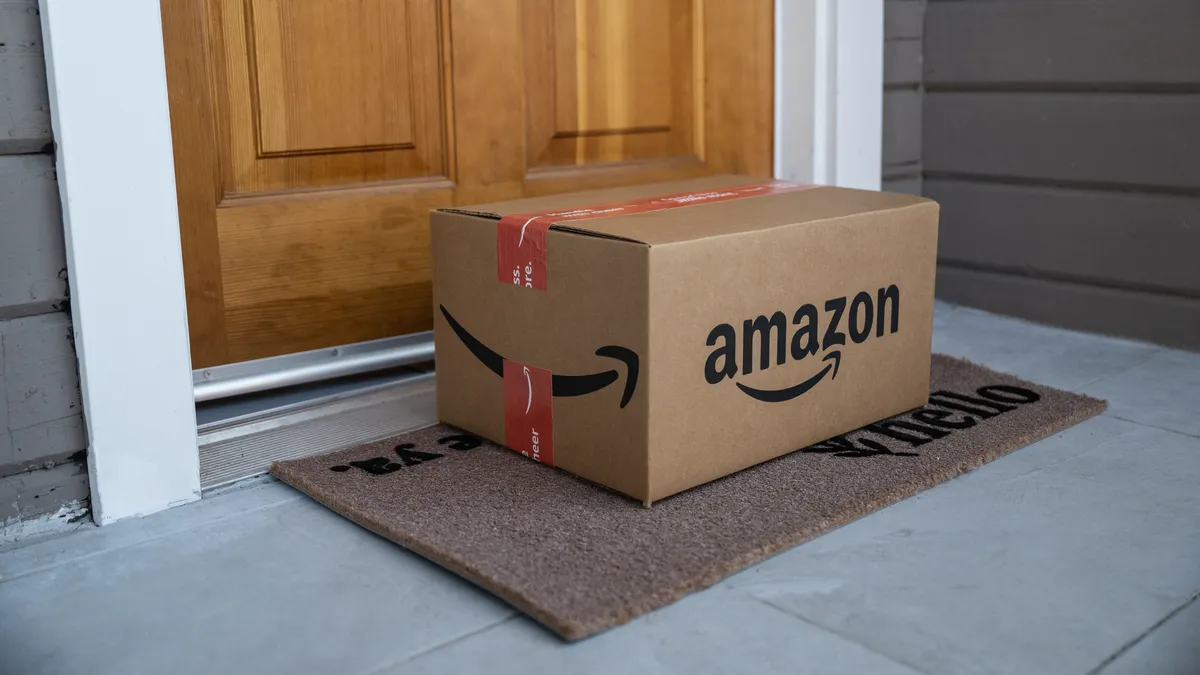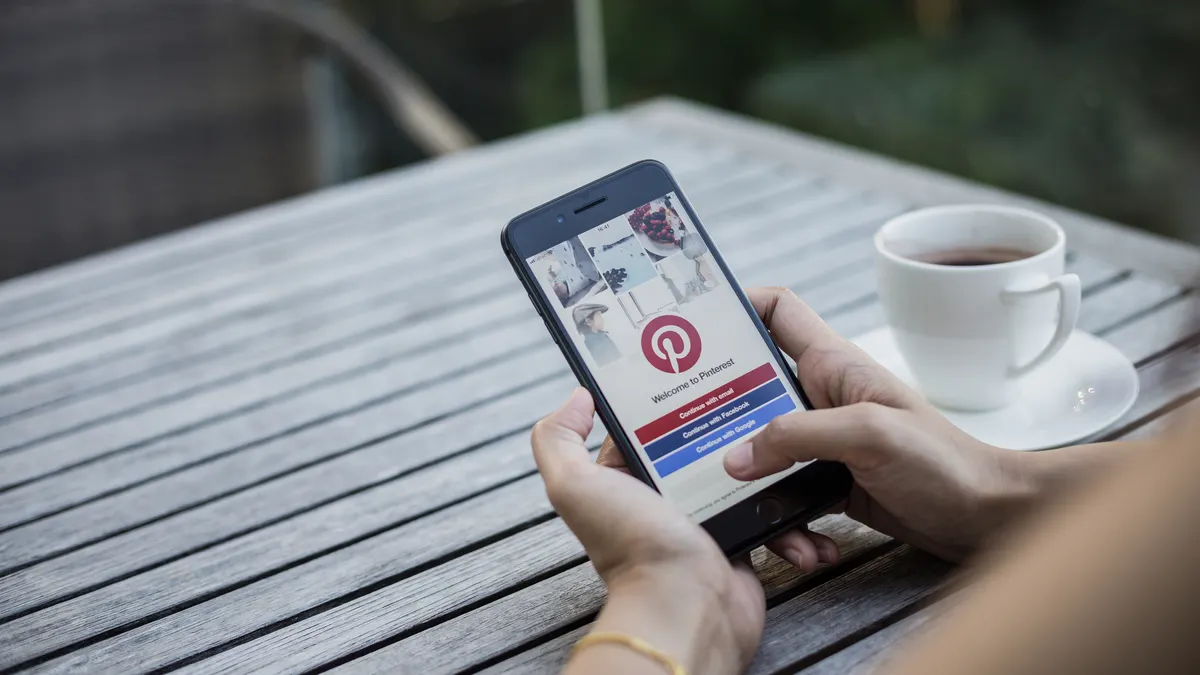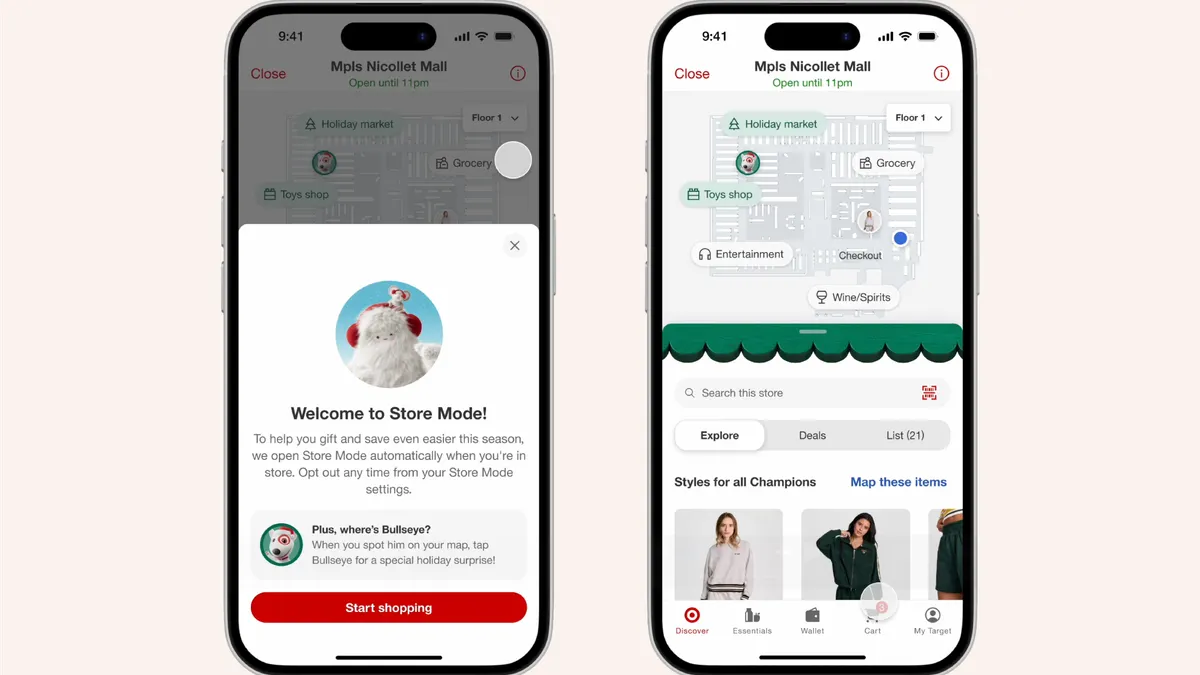For Skechers, long known for its slip-on shoes, 2022 was a turning point.
That was the year the brand became the official footwear sponsor of the U.S. Open for pickleball. What followed was three years of expansion in the performance footwear market, from soccer cleat and basketball shoe launches to signing numerous professional athletes.
It’s a pivot for a brand that grew its reputation on selling comfortable shoes for kids and retirees, but it’s not without reason. One of the brand’s first forays into performance was in golf, a sport where athletes spend a lot of time walking and standing. That’s a natural bridge for a brand like Skechers, Needham managing director of equity research Tom Nikic told Retail Dive.
“One of the other things that maybe inspired the push into performance was — they were pretty early on recognizing the pickleball trend,” Nikic said. And, at least when it first started gaining steam, pickleball was a sport actively being played by older groups or, as Nikic called it, a “Skechers-wearing demographic.”
Now Skechers is making a serious effort to be seen as more than just a comfortable shoe brand. In fact, ahead of its sale to 3G Capital earlier this year, Chief Operating Officer David Weinberg called out its performance division as “an increasingly important part of our growth story globally.”
It’s not an easy road to take, but it could be a lucrative one if done right. To be successful, the footwear company will have to create compelling product, challenge longstanding brands and overcome consumer perceptions.
A ‘natural evolution’?
There are a host of reasons why Skechers might want a strong performance presence.
For starters, it’s a growth category. A report from Circana in August found that sport lifestyle and performance footwear grew across dollars, units and average price in the first half of the year, even as overall U.S. footwear sales were down.
More broadly, it’s one way for Skechers to expand its addressable market and reach more customers. Skechers has already broadened its appeal over the last decade and has higher price points, a better reputation and a more elevated product assortment than it did ten years ago, according to Williams Trading equity analyst Sam Poser. The brand also has more premium appeal in international markets; leaning into performance footwear may be a way to elevate the brand in the U.S.
“If you just walk around, it's much broader than that,” Poser said of Skechers’ customer base. “You see them everywhere, you see every kind of people wearing them.”
Two recent brand ambassadorship deals Skechers signed illustrate the company’s ambitions. In the last week alone, Skechers partnered with actress and fashionista Sofía Vergara and the 7-foot-tall NBA center Isaiah Hartenstein.
“I think this is sort of a natural evolution of this company,” Poser said. “With pickleball — I mean, you couldn't even think of a better fit as a way into court sports … They've gotten much better at picking their shots than they used to.”
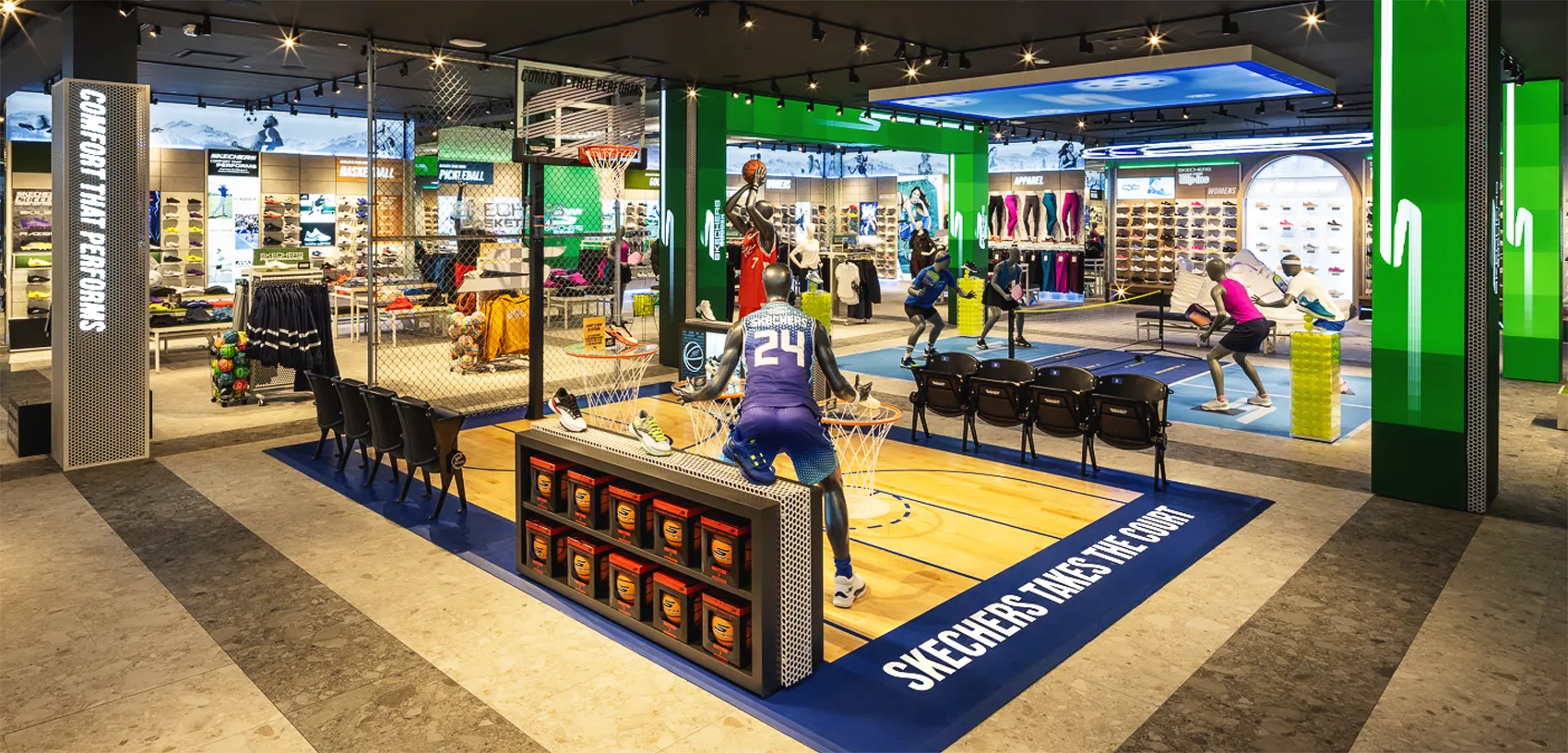
The retailer’s approach can also differ by sport. Golf and pickleball, for example, are areas where Skechers can be more aggressive. In basketball, they may have to be comfortable with a lower position on shoppers’ wish lists.
“They know that it's going to be a while before Foot Locker is carrying that shoe,” Poser said.
Still, there are areas where Skechers could make inroads in these sports. Nikic highlighted that kids footwear could be a particularly good market for Skechers in categories like soccer and basketball, since those shoes have to be replaced often and parents are looking for value. While Skechers launched into soccer and basketball in 2023, it wasn’t until last year that it began selling youth styles.
Skechers declined an interview request for this story, but Weinberg shed some light on the brand’s strategy on a call with analysts in February. The executive said Skechers sees “tremendous opportunities” to broaden its performance footwear offerings — this year marked Skechers’ first international and domestic performance flagship stores — but the retailer is treating the expansion with caution.
“What we're doing now is sort of seeding around the world. We're getting our players in. We're introducing the product,” Weinberg said about the retailer’s foray into basketball, soccer and running. “We’ll go as fast as necessary, and the market will allow us to. We very rarely try to push against the marketplace. As we get more acceptance and our athletes get more known, and we continue to move out, as we get more critical mass, we will move through all different kinds of expansion around the world. So it depends how fast it's received, how well it does.”
Weinberg added that soccer is doing “very well” outside of the U.S. and that the retailer is receiving requests from more basketball players to discuss its product.
“So we’re just at the beginning stage,” Weinberg said.
From Martha Stewart to Joel Embiid
One of Skechers’ greatest challenges in catering to the performance market may be branding. Competitors like Adidas and Nike have decades of experience serving athletes and decades of name recognition among buyers.
Skechers, on the other hand, will have to convince shoppers that the same business dressing Martha Stewart for the garden can provide NBA star Joel Embiid with the correct support for a fast break.
“I think that's a fair concern to have,” Nikic said of Skechers’ ability to reposition itself in shoppers’ eyes. “I think that they probably will have a pretty high burden of proof to gain that credibility … it's not easy.”
One way Skechers is differentiating itself is by focusing on comfort, one of the brand’s defining characteristics. Its performance shoes prioritize comfort features and some even integrate its slip-on technology. Weinberg in February also pointed to Skechers’ relationships with athletes as a way “to gain recognition and establish legitimacy.”
And indeed, Skechers has brought on some major names over the years, including soccer star Harry Kane, golf pros Matt Fitzpatrick and Brooke Henderson, WNBA players including Rickea Jackson and Kiki Iriafen, and many others. According to Weinberg, these athletes provide feedback on Skechers’ designs and lend the retailer credibility with shoppers.
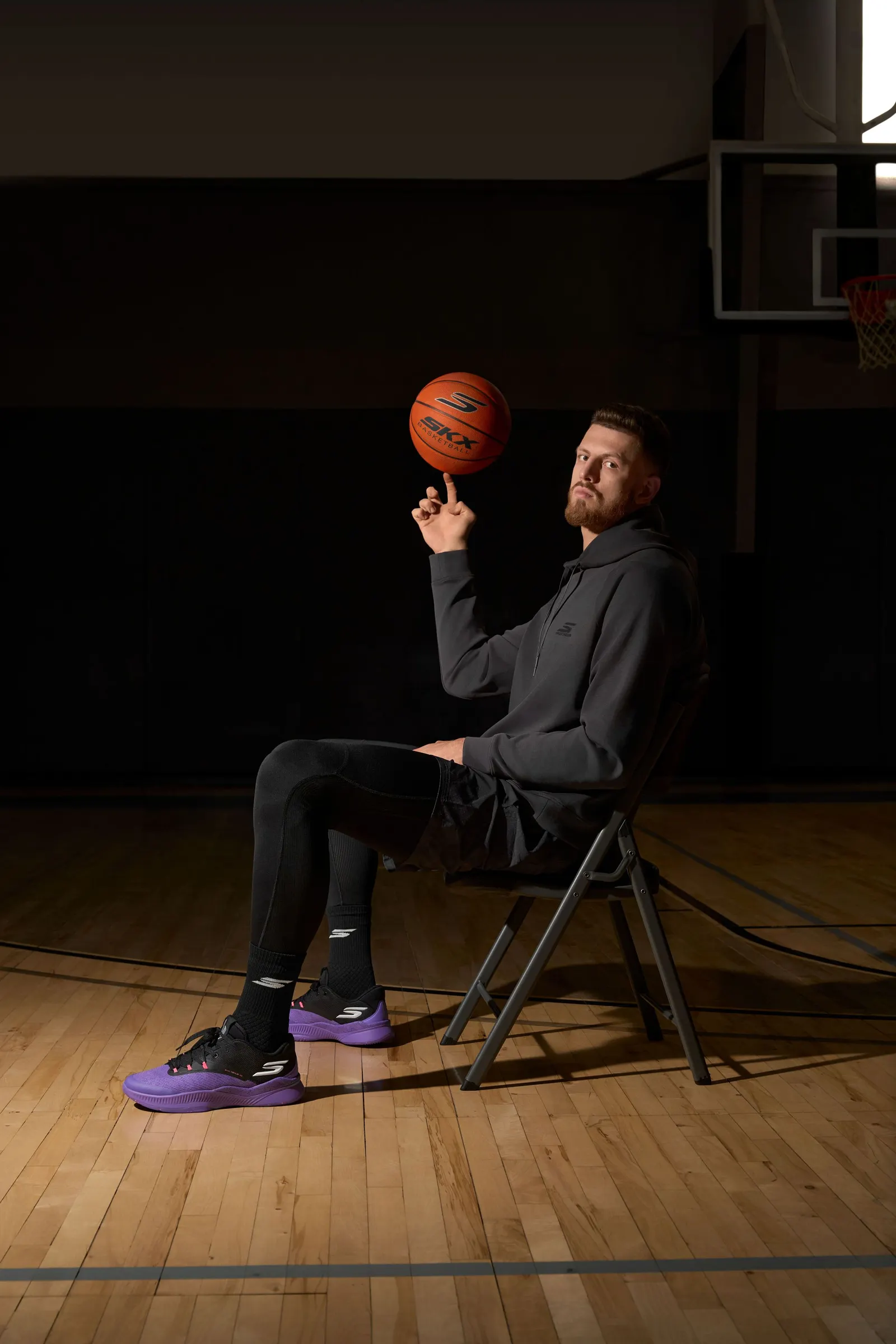
For professional athletes, it may also be appealing to partner with Skechers versus a performance giant like Nike, as it allows them to be a bigger fish in a smaller pond, Poser noted.
Either way, signing professional athletes is a crucial piece of being successful in some of these more competitive categories. Without sports stars wearing its shoes, Skechers would be walking a tough road toward convincing everyday shoppers to wear them. But that’s just one piece of the puzzle.
“The shoes have to work,” Nikic said, “like beyond just being comfortable. They do a great job with comfort, but if you're making a pair of basketball shoes, you need stability and you need ankle support.”
It’s possible Skechers has invested enough in product development to produce “legitimate” offerings in these categories that are both comfortable and hold up to the trials of the sport, according to Nikic. But still, “it's probably a much different experience playing basketball in a pair of Skechers than in a pair of Nikes. Or running in a pair of Skechers versus running in a pair of Hokas or Ons.”
Over the summer at least, Skechers was making some inroads. A June report from TD Cowen on the athletic footwear market, which spans running, casual and basketball styles, found Nike was losing share to a host of brands — among them, Skechers. In particular, Nike was losing older and higher income shoppers.
As of February, performance was still “not an overweight percentage” of Skechers’ business, according to CFO John Vandemore. But as a private company now, Skechers may have more resources to invest in the project — and it’s definitely investing.
“If it's just a side project, it's a very expensive side project given some of the athletes that they’re paying,” Nikic said of the strategy. “It doesn't feel like, ‘Hey, let's kind of poke around at this category and see what comes of it.’ It seems like they're really trying to make a hard, hard push … They're diving in headfirst.”



